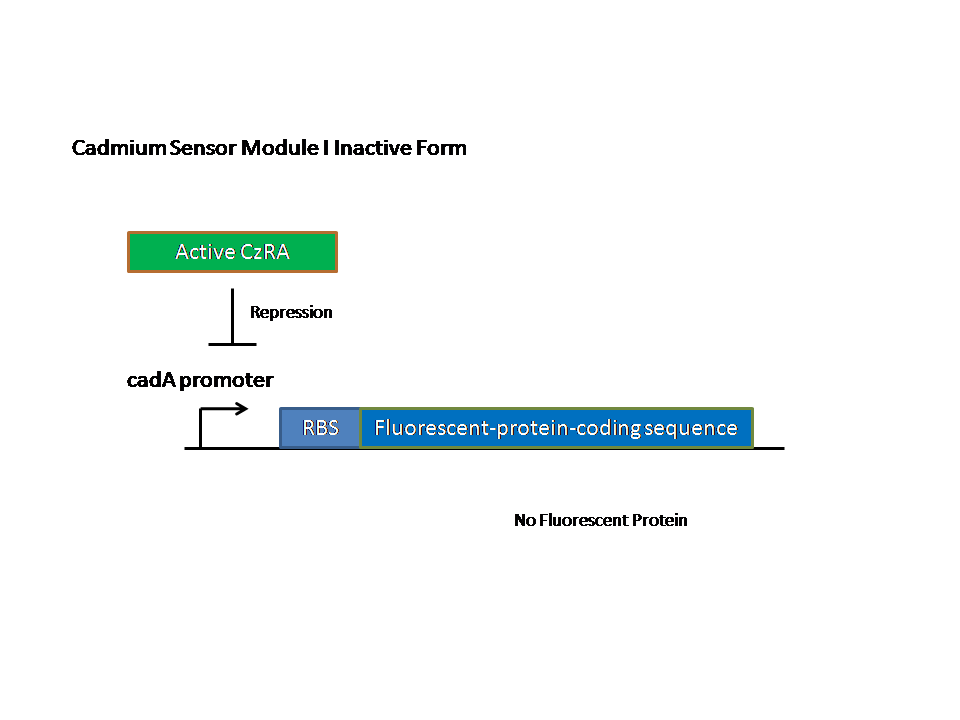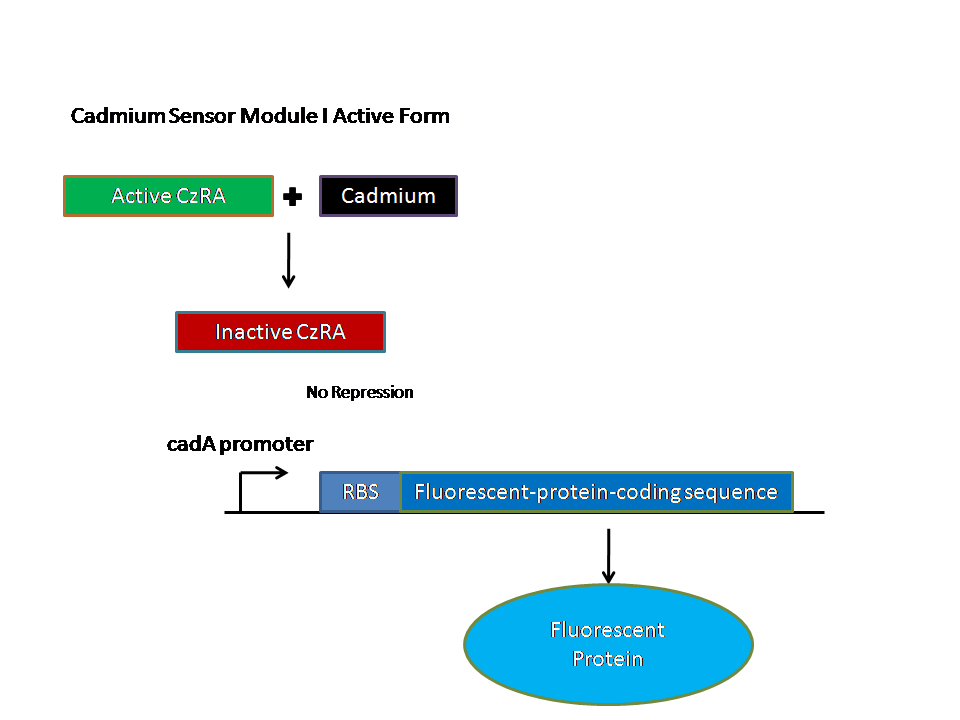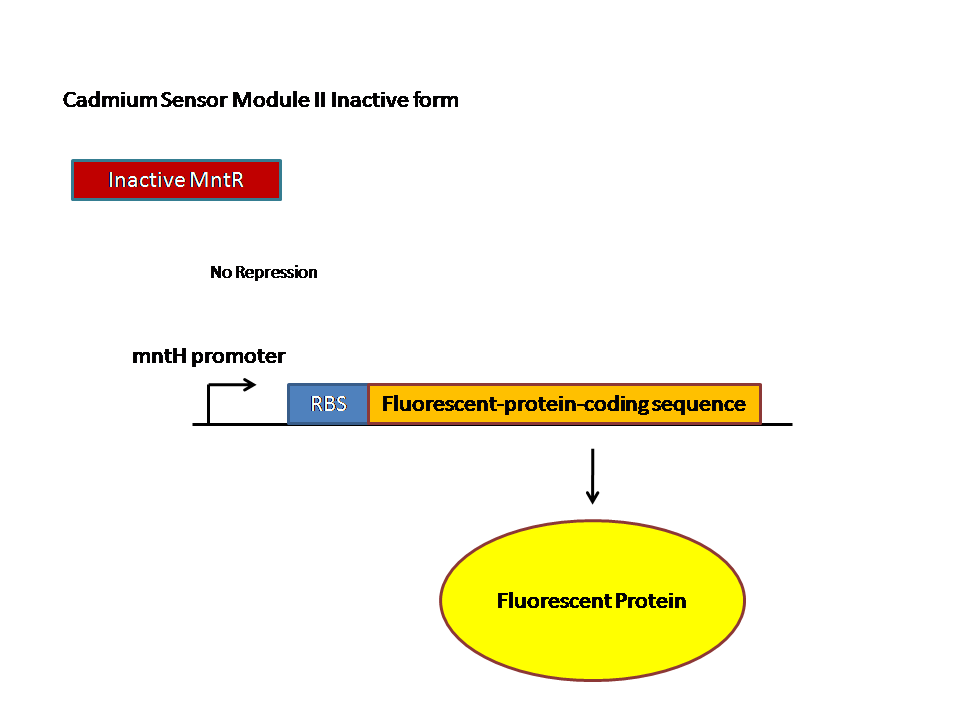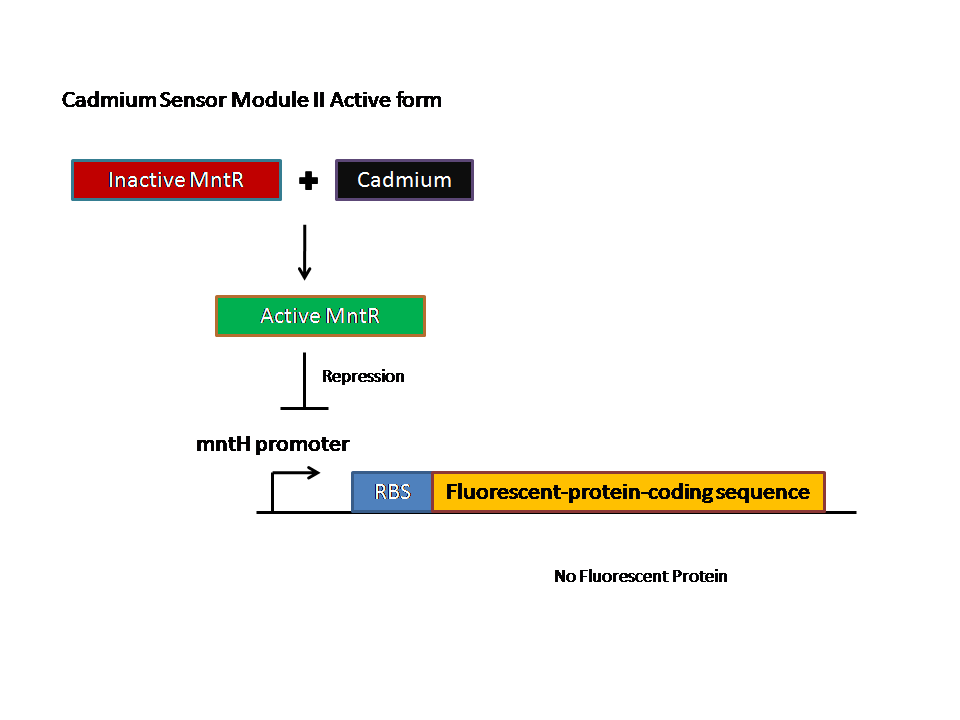Team:Cornell/Project/Design
From 2009.igem.org
Proposed DesignTo create a biosensor dependent on Cd(II) concentration, we decided to engineer the existing metal ion homeostasis system in Bacillus subtilis, in which metal ion transport is tightly regulated. The organism requires trace amounts of metals for normal growth, while high levels interfere with cellular processes. Cd(2+) enters B. subtilis through the manganese ion influx protein MntH. Intracellular Cd(2+) concentration is regulated by several factors, one of which is the CadA efflux protein. CadA is a P-type ATPase that pumps out Cd(2+). Transcription of the cadA gene is regulated by protein CzrA (formerly YozA), a ArsR/SmtB family repressor. CzRA binds and represses the cadA regulatory region and is released when bound by cadmium ions. [7] Cadmium Sensor Module 1Our first cadmium sensing module utilizes the regulatory region of cadA, which activates transcription in the presence of Cd(2+). By attaching this regulatory region to an appropriate ribosome binding site and the gene for Cyan Fluorescent Protein (BBa_E0020), the production of CFP becomes a function of intracellular Cd(2+) concentration. Measuring the peak emission wavelength of CFP at 476 nm will allows us to indirectly measure the intracellular Cd(2+) concentration. As intracellular Cd(2+) concentrations rise we expect to see an increase in fluorescence at the peak emmission wavelength for CFP. Cadmium Sensor Module 2Our second cadmium sensing module is based on the transcription of the Mn(2+) and Cd(2+) influx protein MntH. MntH is part of MntR regulon which is downregulated in the presence of Cd(2+).[1] By using regulatory region of mntH and attaching to an appropriate ribosome binding site and Yellow Fluorescent Protein(BBa_E0030), we can use this module as another measure of the intracellular Cd(2+) concentration. As intracellular Cd(2+) concentrations rise, we expect to see a decrease in fluorescence at the peak emission wavelength for YFP at 527 nm. By using two modules we can enhance our signal to noise ratio and cancel out stochastic error in our readings. The regulatory proteins for both are modules are not completely specific to the Cd(2+) ion. In order to correct for false positive readings we will compare our fluorescence measurements to baseline values in cells induced without Cd(2+).
References[7]Helmann, John D., Qiang Que (2000), Manganese homeostasis in Bacillus subtilus is regulated by MntR, a bifunctional regulator related to the diphtheria toxin repressor family of proteins. Molecular Microbiology 35(6), p.1454-1468 Helmann, John D., Charles M. Moore, Ahmed Gaballa, Monica Hui, Rick W. Ye (2005), Genetic and physiological responses of Bacillus subtilis to metal ion stress. Molecular Microbiology 57(1), p.27-40 |
 "
"




